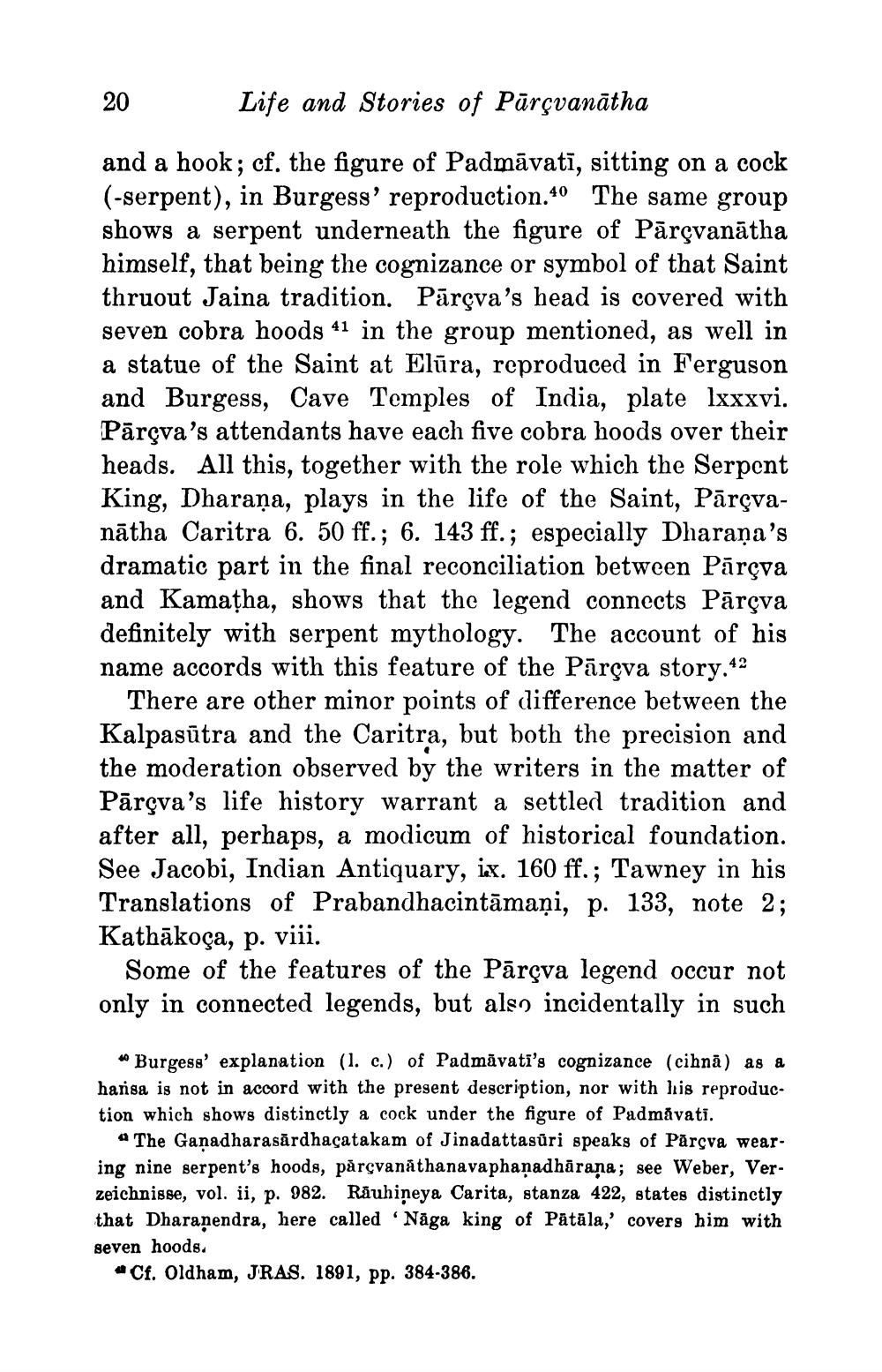________________
20
Life and Stories of Pārçvanātha
and a hook; cf. the figure of Padmāvatī, sitting on a cock (-serpent), in Burgess' reproduction.40 The same group shows a serpent underneath the figure of Pārçvanātha himself, that being the cognizance or symbol of that Saint thruout Jaina tradition. Pārçva's head is covered with seven cobra hoods 41 in the group mentioned, as well in a statue of the Saint at Elūra, reproduced in Ferguson and Burgess, Cave Temples of India, plate lxxxvi. Pārçva's attendants have each five cobra hoods over their heads. All this, together with the role which the Serpent King, Dharaṇa, plays in the life of the Saint, Pārçvanātha Caritra 6. 50 ff.; 6. 143 ff.; especially Dharana's dramatic part in the final reconciliation between Pārçva and Kamațha, shows that the legend connects Pārçva definitely with serpent mythology. The account of his name accords with this feature of the Pārçva story.42
There are other minor points of difference between the Kalpasūtra and the Caritra, but both the precision and the moderation observed by the writers in the matter of Pārgva's life history warrant a settled tradition and after all, perhaps, a modicum of historical foundation. See Jacobi, Indian Antiquary, ix. 160 ff.; Tawney in his Translations of Prabandhacintāmaņi, p. 133, note 2; Kathākoça, p. viii.
Some of the features of the Pārçva legend occur not only in connected legends, but also incidentally in such
* Burgess' explanation (1. c.) of Padmăvati's cognizance (cihnă) as a harisa is not in accord with the present description, nor with his reproduction which shows distinctly a cock under the figure of Padmăvati.
a The Ganadharasārdhaçatakam of Jinadattasúri speaks of Pārçva wear. ing nine serpent's hoods, pārcvanathanavaphanadhārana; see Weber, Verzeichnisse, vol. ii, p. 982. Râuhineya Carita, stanza 422, states distinctly that Dharanendra, here called Näga king of Pātāla,' covers him with seven hoods.
*Cf. Oldham, JRAS. 1891, pp. 384-386.




